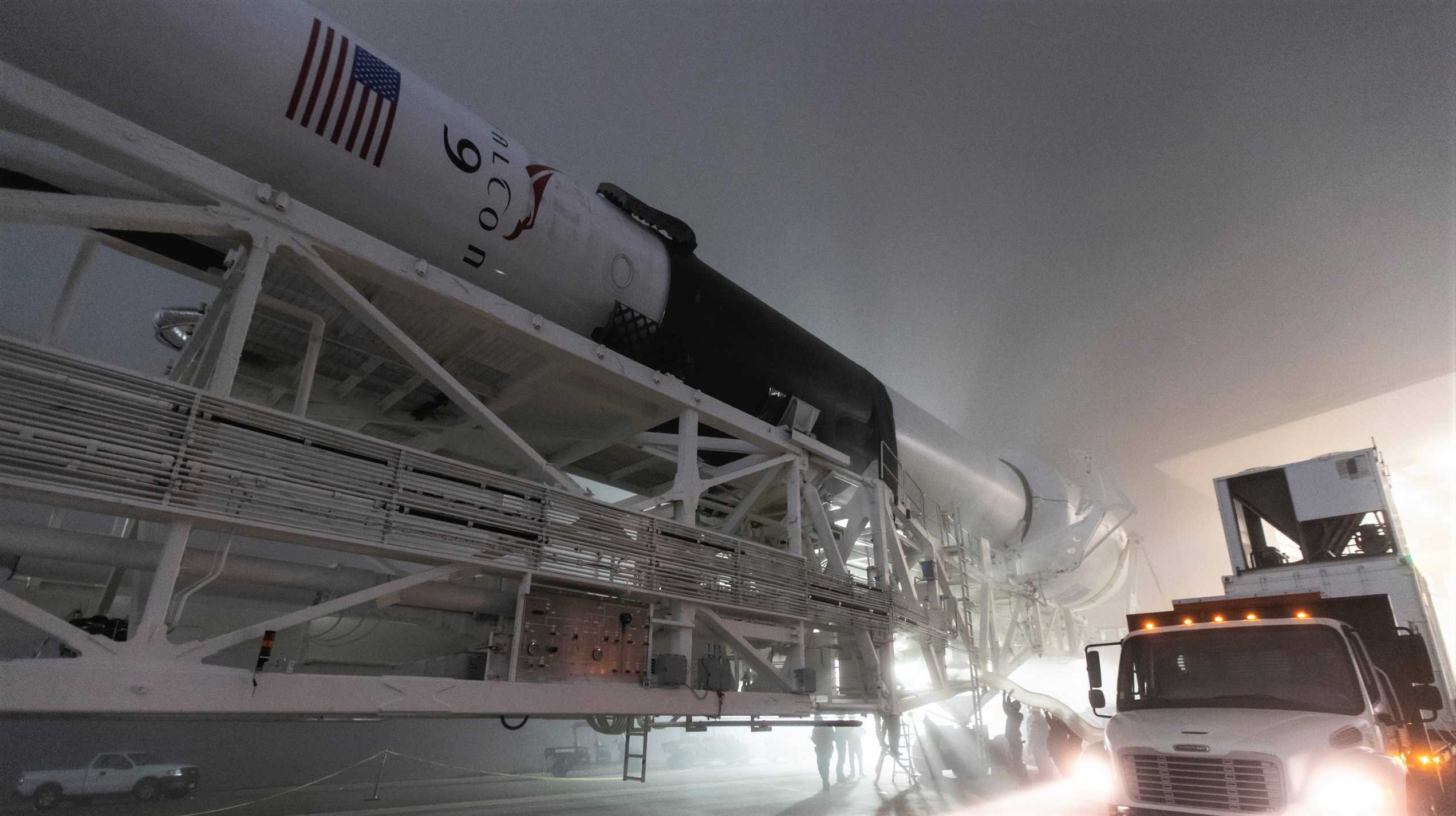
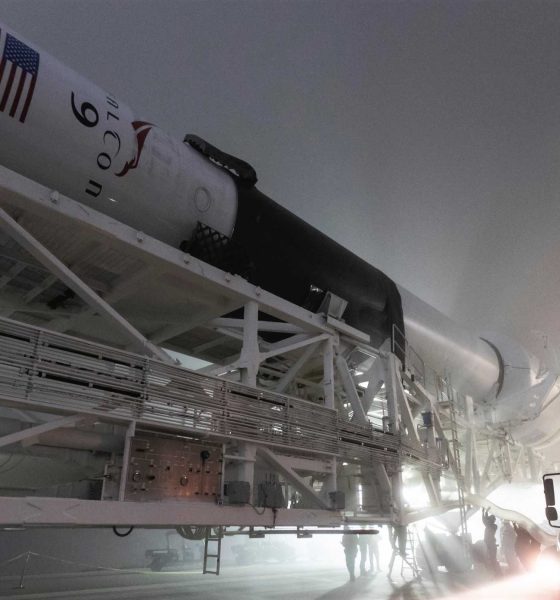
News
SpaceX rocket booster heads west for first California launch in more than a year
For the first time in more than 16 months, a SpaceX Falcon 9 rocket booster has been spotted heading west towards the company’s California pad, a sure sign that the next West Coast launch is just over the horizon.
First spotted in West Texas on August 20th, the Falcon 9 booster – wrapped in a class black plastic cocoon – was captured a second time three days later between Arizona and California. The rocket wrapped up the ~2600 kilometer (~1600 mi) journey from SpaceX’s McGregor, Texas development and test facilities early on August 24th, arriving at the company’s Vandenberg Air Force Base (VAFB) Space Launch Complex 4 (SLC-4) facilities.
At least according to publicly-available launch manifests, the unknown Falcon 9 booster will be spending a fair bit of time in SpaceX’s SLC-4E hangar before its first Californian launch. Still, considering that many misinterpreted a year-old regulatory document as confirmation of SpaceX’s permanent withdrawal from VAFB just earlier this month, a surprise booster arrival is an encouraging sign.
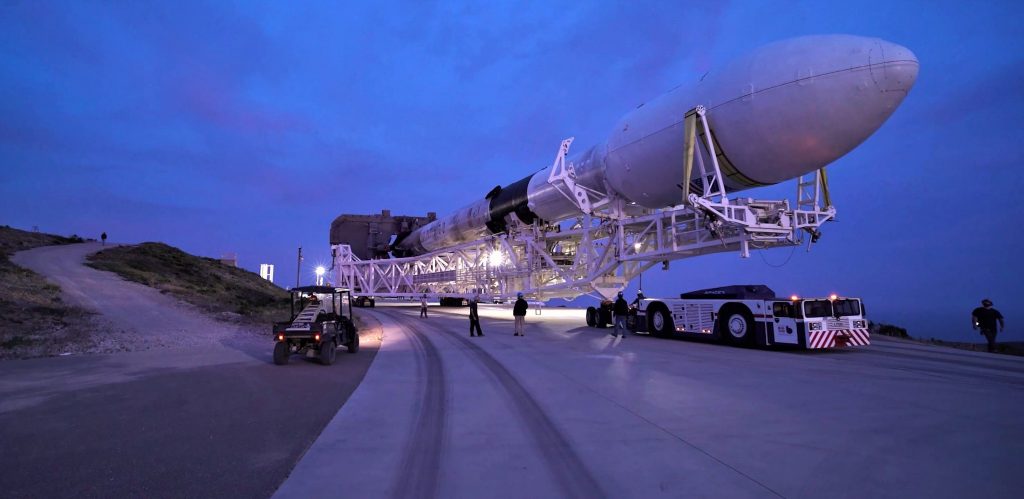
As of now, SpaceX has two or three possible West Coast missions scheduled in the last few months of 2020, but there’s a strong chance that they’ll suffer delays as they near their tentative launch dates. Up first is the joint NASA-ESA Sentinel 6A (Sentinel 6 Michael Freilich, Jason-CS A) ocean topography satellite, one of two new spacecraft meant to continue work done by the Jason-3 spacecraft (launched by SpaceX in 2016). According to a joint review completed on June 25th and referenced in an official document (PDF), SpaceX and NASA are working towards the first Sentinel 6A launch attempt no earlier than (NET) November 10th, 2020.
NASA awarded SpaceX the $97 million launch contract in 2017, all but guaranteeing that Sentinel 6A will fly on a brand new Falcon 9 booster. The fact that the booster spotted in transport over the last week was never seen East of Texas strongly implies that it’s a new Falcon 9 SpaceX tested in McGregor before shipping back to California, in which case Sentinel 6A is almost certainly SpaceX’s next VAFB launch.
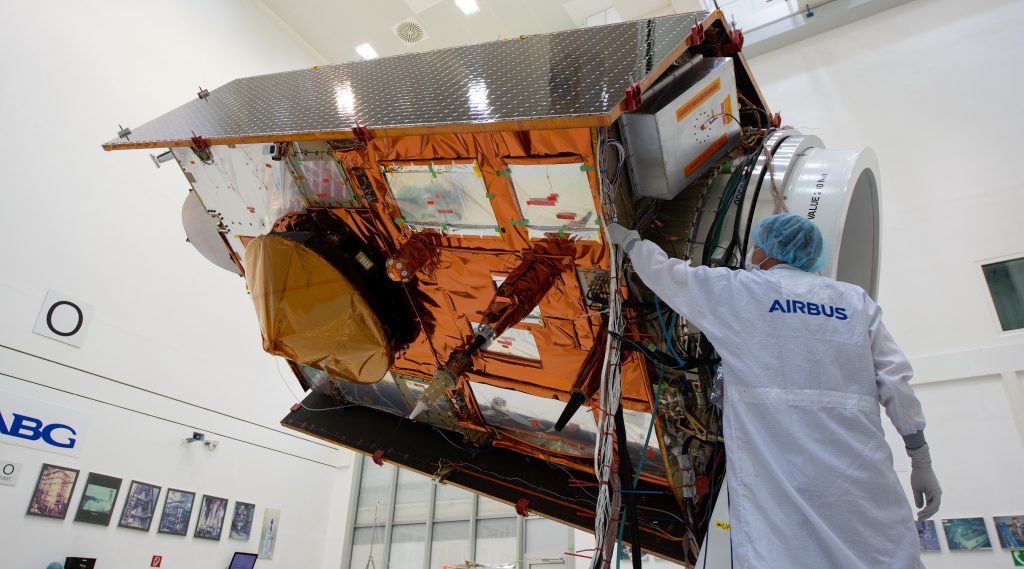
In the likely event that the booster that arrived at VAFB on August 24th is unflown, it’s probably Falcon 9 B1063. Germany’s SARah-1 radar imaging satellite is possibly the only other West Coast launch on SpaceX’s manifest that could warrant sending a new booster to California, but recent signs point towards that ~2200 kg (4850 lb) spacecraft launching in Q1 2021 (a delay from Q4 2020) as part of a dedicated SpaceX rideshare mission.
Less likely, SARah-1 could have been manifested on SpaceX’s first dedicated rideshare mission, scheduled to launch in December 2020. Either way, as fairly complex and expensive one-off science spacecraft, both SARah-1 and Sentinel 6A are liable to slip right from their current launch targets, meaning that Falcon 9 B1063 will likely spend at least 2-3 months in storage between now and the start of its first launch flow.

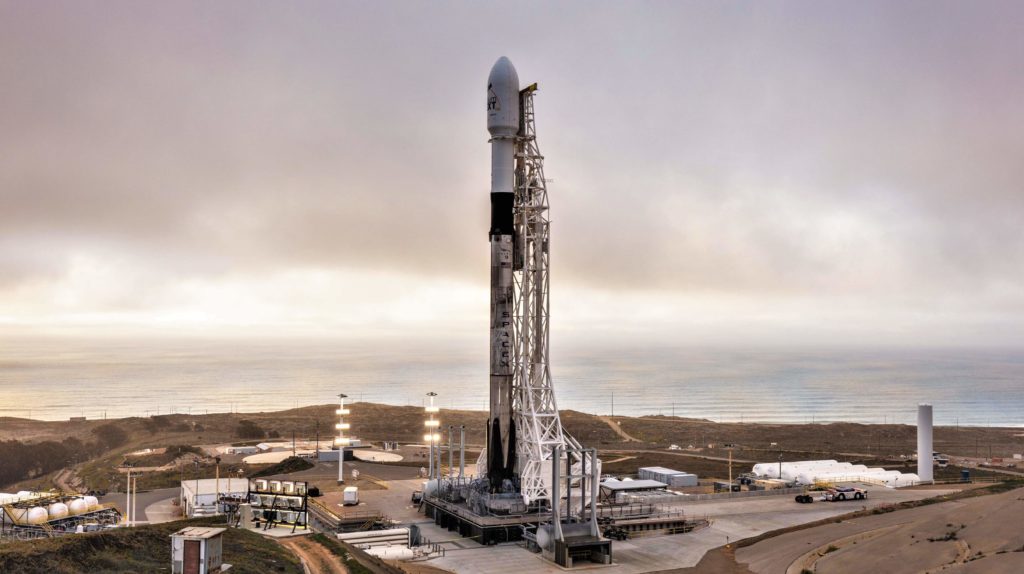
Regardless of the payload or the first stage launching it, SpaceX shipped its former West Coast drone ship landing platform to Florida more than a year ago. Any Falcon 9 booster launching from California will thus have to be expended or land back on land at LZ-4.
While SpaceX and its mystery Falcon 9 booster wait for their next West Coast launch, the company will likely take advantage of the opportunity to familiarize an almost entirely new team of pad and launch engineers and technicians. After its June 2019 Radarsat Constellation Mission launch, SpaceX effectively mothballed its Vandenberg pad and either laid off or transferred the vast majority of employees specific to SLC-4. SpaceX began hiring to rebuild that team in early 2020.
Thanks to a major multi-launch US military contract SpaceX won just a few weeks ago, the company’s Vandenberg facilities are all but guaranteed to remain active – even if only intermittently so – for most of the 2020s.
Check out Teslarati’s Marketplace! We offer Tesla accessories, including for the Tesla Cybertruck and Tesla Model 3.

News
Rivian unveils self-driving chip and autonomy plans to compete with Tesla
Rivian, a mainstay in the world of electric vehicle startups, said it plans to roll out an Autonomy+ subscription and one-time purchase program, priced at $49.99 per month and $2,500 up front, respectively, for access to its self-driving suite.
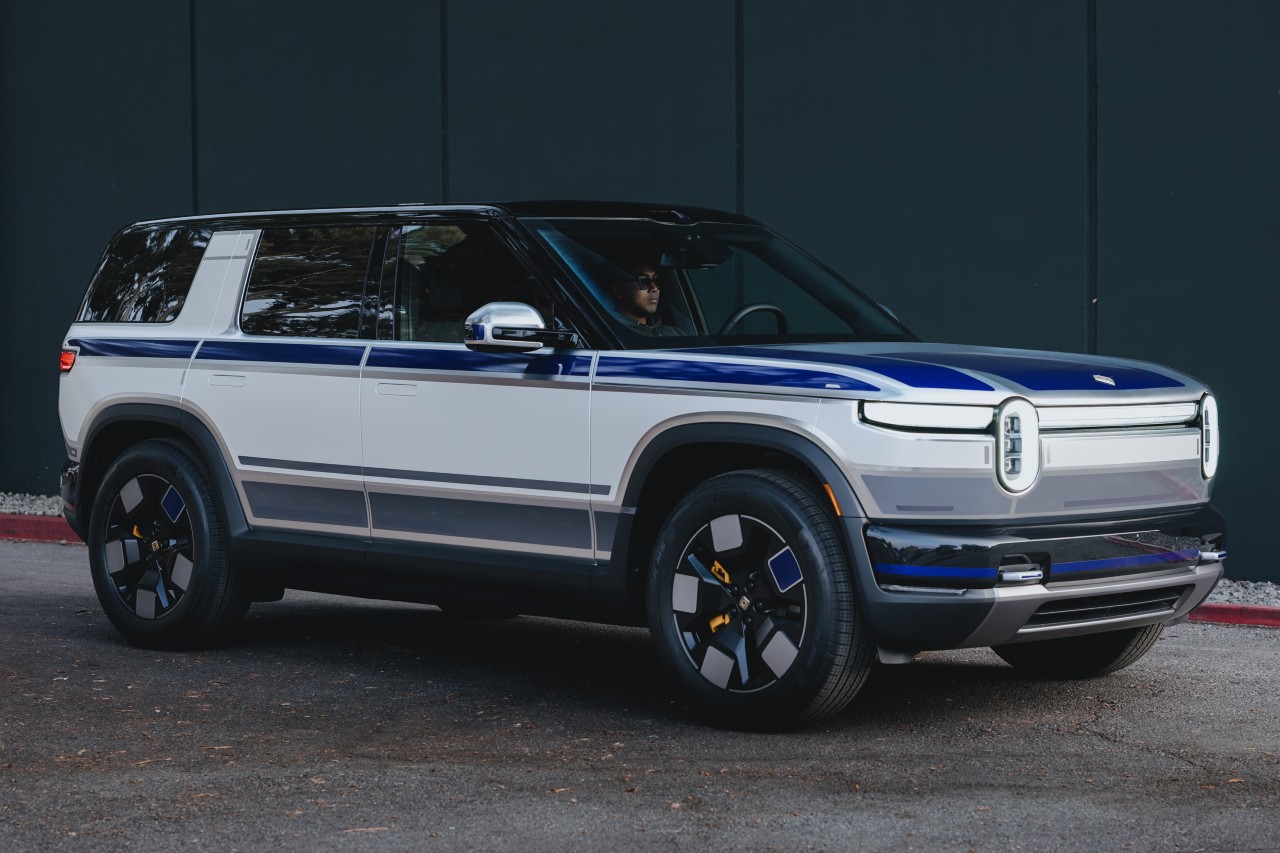
Rivian unveiled its self-driving chip and autonomy plans to compete with Tesla and others at its AI and Autonomy Day on Thursday in Palo Alto, California.
Rivian, a mainstay in the world of electric vehicle startups, said it plans to roll out an Autonomy+ subscription and one-time purchase program, priced at $49.99 per month and $2,500 up front, respectively, for access to its self-driving suite.
CEO RJ Scaringe said it will learn and become more confident and robust as more miles are driven and it gathers more data. This is what Tesla uses through a neural network, as it uses deep learning to improve with every mile traveled.
He said:
“I couldn’t be more excited for the work our teams are driving in autonomy and AI. Our updated hardware platform, which includes our in-house 1600 sparse TOPS inference chip, will enable us to achieve dramatic progress in self-driving to ultimately deliver on our goal of delivering L4. This represents an inflection point for the ownership experience – ultimately being able to give customers their time back when in the car.”
At first, Rivian plans to offer the service to personally-owned vehicles, and not operate as a ride-hailing service. However, ride-sharing is in the plans for the future, he said:
“While our initial focus will be on personally owned vehicles, which today represent a vast majority of the miles to the United States, this also enables us to pursue opportunities in the rideshare space.”
The Hardware
Rivian is not using a vision-only approach as Tesla does, and instead will rely on 11 cameras, five radar sensors, and a single LiDAR that will face forward.
It is also developing a chip in-house, which will be manufactured by TSMC, a supplier of Tesla’s as well. The chip will be known as RAP1 and will be about 50 times as powerful as the chip that is currently in Rivian vehicles. It will also do more than 800 trillion calculations every second.
Meet the Rivian Autonomy Processor.
Fast, smart, scalable and purpose-built for autonomous driving and the world of physical AI. Hitting the open road in 2026. pic.twitter.com/0wYXi5WKy7
— Rivian (@Rivian) December 11, 2025
RAP1 powers the Autonomy Compute Module 3, known as ACM3, which is Rivian’s third-generation autonomy computer.
ACM3 specs include:
- 1600 sparse INT8 TOPS (Trillion Operations Per Second).
- The processing power of 5 billion pixels per second.
- RAP1 features RivLink, a low-latency interconnect technology allowing chips to be connected to multiply processing power, making it inherently extensible.
- RAP1 is enabled by an in-house developed AI compiler and platform software
As far as LiDAR, Rivian plans to use it in forthcoming R2 cars to enable SAE Level 4 automated driving, which would allow people to sit in the back and, according to the agency’s ratings, “will not require you to take over driving.”
More Details
Rivian said it will also roll out advancements to the second-generation R1 vehicles in the near term with the addition of UHF, or Universal Hands-Free, which will be available on over 3.5 million miles of roadway in the U.S. and Canada.
More than any other feature, our owners have asked for more hands-free miles.
With Universal Hands-Free, you can now enjoy hands-free assisted driving on any road with clearly defined lanes. That’s roughly 3.5 million miles in the U.S. and Canada.
Look for it in our next… pic.twitter.com/ZFhwVzvt6b
— Rivian (@Rivian) December 11, 2025
Rivian will now join the competitive ranks with Tesla, Waymo, Zoox, and others, who are all in the race for autonomy.
News
Tesla partners with Lemonade for new insurance program
Tesla recently was offered “almost free” coverage for Full Self-Driving by Lemonade’s Shai Wininger, President and Co-founder, who said it would be “happy to explore insuring Tesla FSD miles for (almost) free.”

Tesla owners in California, Oregon, and Arizona can now use Lemonade Insurance, the firm that recently said it could cover Full Self-Driving miles for “almost free.”
Lemonade, which offered the new service through its app, has three distinct advantages, it says:
- Direct Connection for no telematics device needed
- Better customer service
- Smarter pricing
The company is known for offering unique, fee-based insurance rates through AI, and instead of keeping unclaimed premiums, it offers coverage through a flat free upfront. The leftover funds are donated to charities by its policyholders.
On Thursday, it announced that cars in three states would be able to be connected directly to the car through its smartphone app, enabling easier access to insurance factors through telematics:
Lemonade customers who own @Tesla vehicles in California, Oregon, and Arizona can now connect their cars directly to the Lemonade app! ⚡🚘
Direct connection = no telematics device needed 📵
Better customer experience 💃
Smarter pricing with Lemonade 🧠This is a game-changer… pic.twitter.com/jbabxZWT4t
— Lemonade (@Lemonade_Inc) December 11, 2025
Tesla recently was offered “almost free” coverage for Full Self-Driving by Lemonade’s Shai Wininger, President and Co-founder, who said it would be “happy to explore insuring Tesla FSD miles for (almost) free.”
The strategy would be one of the most unique, as it would provide Tesla drivers with stable, accurate, and consistent insurance rates, while also incentivizing owners to utilize Full Self-Driving for their travel miles.
Tesla Full Self-Driving gets an offer to be insured for ‘almost free’
This would make FSD more cost-effective for owners and contribute to the company’s data collection efforts.
Data also backs Tesla Full Self-Driving’s advantages as a safety net for drivers. Recent figures indicate it was nine times less likely to be in an accident compared to the national average, registering an accident every 6.36 million miles. The NHTSA says a crash occurs approximately every 702,000 miles.
Tesla also offers its own in-house insurance program, which is currently offered in twelve states so far. The company is attempting to enter more areas of the U.S., with recent filings indicating the company wants to enter Florida and offer insurance to drivers in that state.
News
Tesla Model Y gets hefty discounts and more in final sales push
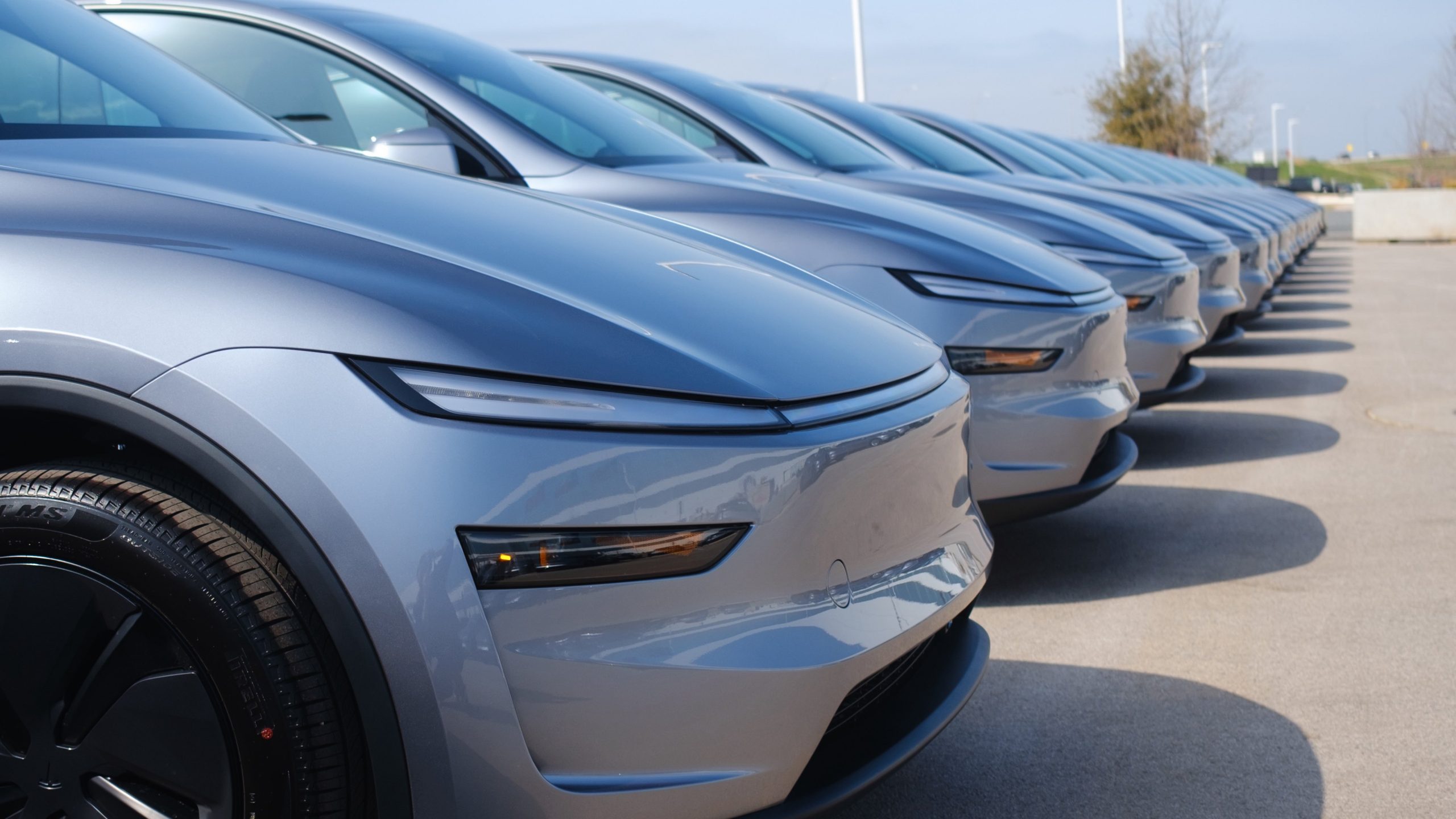
Tesla Model Y configurations are getting hefty discounts and more benefits as the company is in the phase of its final sales push for the year.
Tesla is offering up to $1,500 off new Model Y Standard trims that are available in inventory in the United States. Additionally, Tesla is giving up to $2,000 off the Premium trims of the Model Y. There is also one free upgrade included, such as a paint color or interior color, at no additional charge.
NEWS: Tesla is now offering discounts of up to $1,500 off new Model Y Standard vehicles in U.S. inventory. Discounts of up to $2,000 are also being offered on Model Y Premiums.
These discounts are in addition to the one free upgrade you get (such as Diamond Black paint) on… pic.twitter.com/L0RMtjmtK0
— Sawyer Merritt (@SawyerMerritt) December 10, 2025
Tesla is hoping to bolster a relatively strong performance through the first three quarters of the year, with over 1.2 million cars delivered through the first three quarters.
This is about four percent under what the company reported through the same time period last year, as it was about 75,000 vehicles ahead in 2024.
However, Q3 was the company’s best quarterly performance of all time, and it surged because of the loss of the $7,500 EV tax credit, which was eliminated in September. The imminent removal of the credit led to many buyers flocking to Tesla showrooms to take advantage of the discount, which led to a strong quarter for the company.
2024 was the first year in the 2020s when Tesla did not experience a year-over-year delivery growth, as it saw a 1 percent slide from 2023. The previous years saw huge growth, with the biggest coming from 2020 to 2021, when Tesla had an 87 percent delivery growth.
This year, it is expected to be a second consecutive slide, with a drop of potentially 8 percent, if it manages to deliver 1.65 million cars, which is where Grok projects the automaker to end up.
Tesla will likely return to its annual growth rate in the coming years, but the focus is becoming less about delivery figures and more about autonomy, a major contributor to the company’s valuation. As AI continues to become more refined, Tesla will apply these principles to its Full Self-Driving efforts, as well as the Optimus humanoid robot project.
Will Tesla thrive without the EV tax credit? Five reasons why they might
These discounts should help incentivize some buyers to pull the trigger on a vehicle before the year ends. It will also be interesting to see if the adjusted EV tax credit rules, which allowed deliveries to occur after the September 30 cutoff date, along with these discounts, will have a positive impact.








